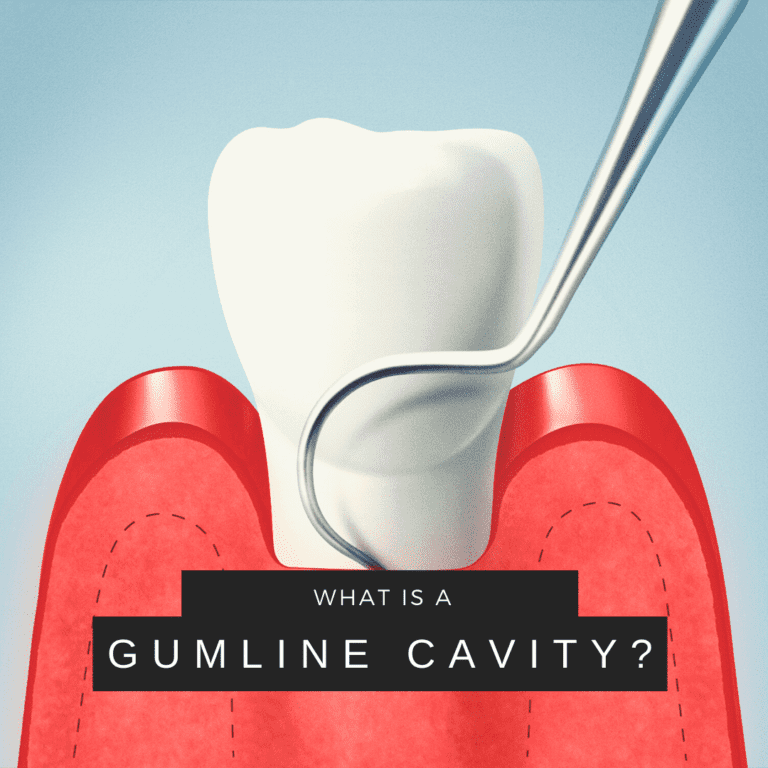What is a Gum Line Cavity?

Cavities can form anywhere on the teeth. They are caused by bacteria that produce acids on the surface of teeth. Over time, these acids dissolve the hard minerals within the tooth and cause a cavity to form. There are different types of cavities, depending on where they form. In this blog, we will focus on gum line cavities.

What is a gum line cavity?
A gum line cavity is a type of cavity that affects the area between teeth and gums. The term “gum line cavity” actually refers to two different types of cavities: smooth surface cavities or root cavities. When gum line cavities affect the smooth surface of the tooth’s crown, then they are classified as smooth surface cavities. On the other hand, if a cavity forms on the root of a tooth, then they are called root cavities. Gum line cavities can extend over both the crown and root in some individuals.
What causes gum line cavities?
Gum Line cavities are caused by the same factors that contribute to other types of cavities: bacteria, sugar, and excess plaque. When the bacteria in your mouth consume sugars from the meals you eat, they produce acid that attacks your teeth. Over time, this can damage the enamel and spread to the dentin and even down to the pulp of your tooth.
Plaque, which is the sticky substance that forms on your teeth and contains bacteria, can contribute to gum line cavities because it increases the number of acid attacks to your teeth. Although the risk factors are similar for all types of cavities, some people are more susceptible to developing gum line cavities than others. The primary risk factor for developing gum line cavities is gum recession.
Gingivitis is a gum disease that causes inflammation of the gums. Gum recession is a condition that occurs when the gum tissue surrounding your teeth pulls away from the teeth itself. This can expose the root of your tooth, leading to increased sensitivity and decay.
How are Gum line Cavities Treated?
Gum line cavities are treated in much the same way as other types of dental cavities: with restorative procedures. However, there are different options depending on the location of the cavity. Composite fillings are the most common treatment option for all small to medium smooth surface cavities. A composite filling can be used to restore your smile if you have smooth surface cavities that form near the gum line and do not involve any tooth roots.
If the cavity is located beneath the gum line, however, things are more difficult and depend on the extent of the cavity. For example cavities on the tooth root may require a root canal or even minor gum surgery. This is likely the case when the cavity extends below the gum tissue. Before recommending a treatment, your dentist will first assess your specific situation.
In Conclusion
Gum line cavities are a form of oral cavity that is located near or beneath the gum line. They’re more prevalent than many people realize, and if they aren’t treated quickly, they can be harmful. In this blog, we have discussed how these types of cavities develop, what causes them, and what you should do if one appears in your mouth. Cavities are relatively common, so if you notice any signs or symptoms of a cavity, be sure to contact your dentist for an assessment and treatment plan.






Recent Comments